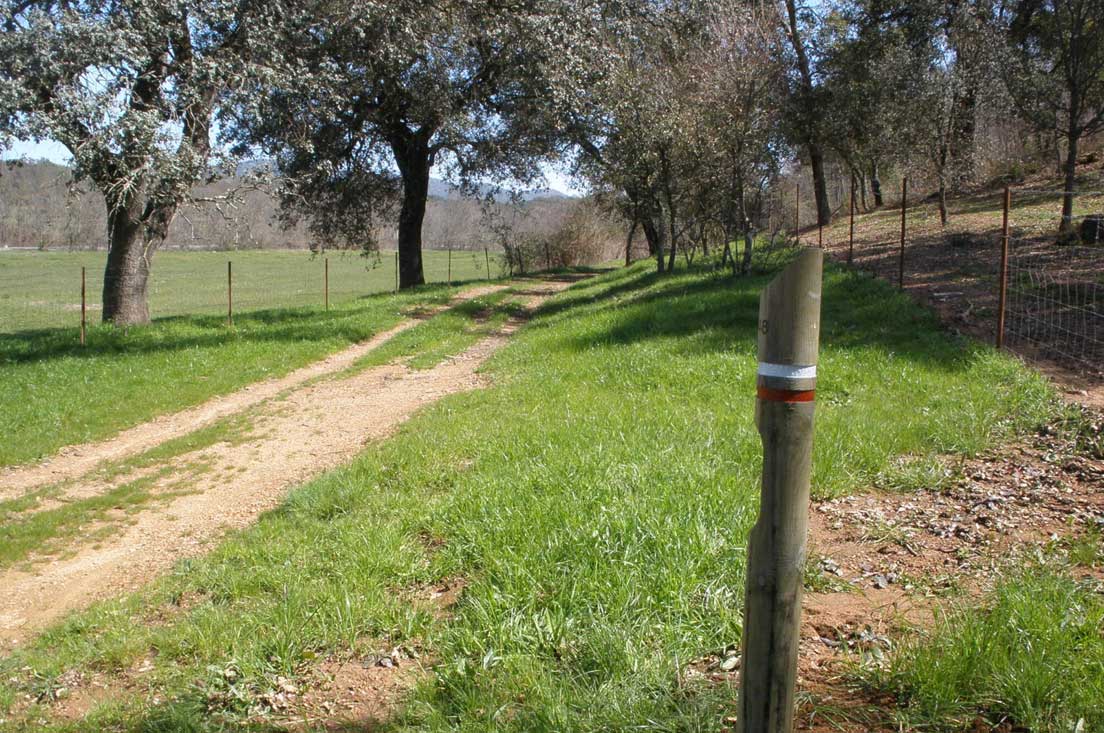Stage 5. Almadén de la Plata – El Real de la Jara
We are set to head off on our last day through Andalusian lands, from Almadén de la Plata to El Real de la Jara, a short, beautiful stage that runs entirely through the southern slopes of the Sierra Norte de Sevilla. It stretches entirely along roads surrounded by rockrose and holm oaks, crossing cattle farms, hunting grounds and large pasture areas, where we can observe a variety of animals and the flight of all kinds of birds. This stage coincides with the GR 48 “Sierra Morena”, so the typical red and white markings serve to guide us along our way.
We leave Almadén de la Plata by taking the path that leads to its bullring. Almost the entire route coincides with the Camino Viejo de Almadén de la Plata or de los Bonales trekking lane. This ancient path linked the towns of Almadén de la Plata and Cazalla de la Sierra. It possibly came into being due to the need to transport marble from the Almadén quarries to Córdoba. It made up part of the historical layout of the Vía de la Plata Route which facilitated the Romanization of Spain, the Arabization of the northwest of the peninsula, the reconquest of Extremadura and Andalusia, etc.
A short distance from Almadén, we can see Cerro de los Covachos, an outcrop of lower Cambrian marble of tremendous mining, historical and biological interest. Located there is Covachos Cave, where Neolithic utensils were found, although access to it is restricted and very limited.

We walk the last 4 km along a wide track that crosses Robles pasture to El Real de la Jara, the last town in the province of Seville. The original settlement emerged at the foot of the Roman road, which later would become the royal highway, the main route connecting Andalusia and Extremadura. The title of Royal (Real) was granted by the Catholic Monarchs Ferdinand and Isabella as a reward for the aid given by its inhabitants during the Reconquest, while the last part of its name recalls the name the Arabs gave the town, Xara. Like all towns in the Sierra Norte, this is a “white village”, name given to towns whose buildings are all whitewashed. Standing out amidst the town’s architecture are the church of Mudejar origin and the 12th–century castle. A visit to the taxidermy museum is also recommended. Interesting to point out is the presence of a Mudejar–style medieval castle half a kilometer from our Route.
